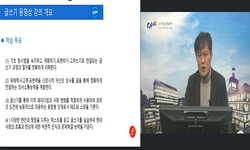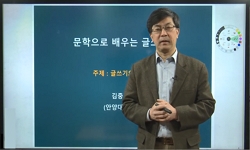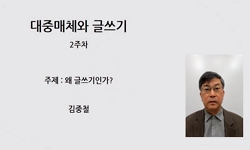본 연구는 1930년대 한국 근대소설의 자기 지시적 글쓰기 양상을 살펴보았다. 자기 지시적 글쓰기는 텍스트의 화자나 주인공이 텍스트 밖의 작가를 지시하는 것을 가리킨다. 1930년대 소설의 ...
http://chineseinput.net/에서 pinyin(병음)방식으로 중국어를 변환할 수 있습니다.
변환된 중국어를 복사하여 사용하시면 됩니다.
- 中文 을 입력하시려면 zhongwen을 입력하시고 space를누르시면됩니다.
- 北京 을 입력하시려면 beijing을 입력하시고 space를 누르시면 됩니다.
1930년대 한국 근대소설의 사(私)적 성격 연구 : 자기 지시적 글쓰기 양상을 중심으로 = (A)study on the characteristics of Korean `I-Novels' in the 1930s
한글로보기https://www.riss.kr/link?id=T8983194
- 저자
-
발행사항
서울: 연세대학교, 2003
- 학위논문사항
-
발행연도
2003
-
작성언어
한국어
-
주제어
근대 소설[近代小說] ; 심경 소설[心境小說] ; 신변 소설[身邊小說] ; 1930년대 ; 근대소설 ; 자기지시적 ; 글쓰기 ; 자기주체화 ; 자기패러디 ; 고현학 ; 상상적 ; 공동체 ; 식민지적 ; 무의식 ; 생활세계 ; SELF-REFERENTIAL ; WRITING ; AUTO-THEMATISATION ; SELF-PARODY ; IMAGINED ; COMMUNITY ; COLONIAL ; UNCONSCIOUSNESS ; LIFEWORLD
-
KDC
813.6 판사항(4)
-
DDC
895.733 판사항(21)
-
발행국(도시)
서울
-
형태사항
iv, 155p.; 26cm
- 소장기관
-
0
상세조회 -
0
다운로드
부가정보
국문 초록 (Abstract)
본 연구는 1930년대 한국 근대소설의 자기 지시적 글쓰기 양상을 살펴보았다. 자기 지시적 글쓰기는 텍스트의 화자나 주인공이 텍스트 밖의 작가를 지시하는 것을 가리킨다. 1930년대 소설의 두드러진 특징은 작가의 일상이나 자기의 문제를 소설의 내용으로 삼으며 서술 행위 자체가 이야기 대상이 되기도 한다는 점이다.
자기 지시적 글쓰기 양상을 분석하기 위해 본 연구는 이상, 박태원, 이태준, 이광수, 김남천, 한설야의 1930년대 소설을 대상으로, ‘자기’를 탐색하고 드러내는 서술의 수행 양상을 분석하고, 자기를 구성하는 담론의 층위들과 자기와 사적 영역의 관계 양상을 문제틀로 설정하여 분석하였다.
본 연구에서는 1930년대 소설에서 텍스트 밖의 작가를 지시대상으로 드러내는 자기 지시적 글쓰기 양상을 내성소설, 심경소설, 신변소설 세 유형으로 분류하였다.
첫째 유형은 서술자와 피서술자의 거울적 반영을 통해 자기를 지향하는 내성소설이다. 이상, 박태원의 내성소설은 ‘소설의 자기 의식화’를 수행하는 과정을 보여준다. 이들의 작품은 지금 원고지와 마주하고 앉아 쓰고 있는 서술 행위 자체를 표현의 대상으로 삼고 있다. 이들의 작품은 ‘자기’를 통해 현실을 사유하는 방법이 작품의 주제가 된다. 과잉된 자의식은 글쓰기와 예술 지향에서 형성되고, 작가의 자의식과 현실 세계와의 괴리가 심각하면 심각할수록 예술적 순수성은 보장받게 된다.
이상 소설은 행위의 필연성을 회멸하고 정신의 가능성을 점차 확대해 가면, 행위의 불가능이라는 벽에 다다르게 되는 정신과 행위의 패러독스를 보여준다. 이상 문학에 나타난 ‘자기’ 패러디는 절대적 자아를 추구하는 존재자의 우월감과 생활 세계와의 끈을 잃어버린 잉여자의 열패감으로 분열되는 상황에서 나오는 것이다.
이에 비해 박태원 소설의 ‘나’는 일상의 생활 세계나 인생에 대해 ‘피로’, ‘우울’이라는 청년적 감정의 특질을 갖고 있지만, 예술가와 생활자의 분리를 생활로써의 글쓰기를 통해 극복하려고 한다. 박태원의 고현학과 심리묘사의 방법은 자기의 내면과 생활 세계라는 외연을 연결시켜 주는 지점이자, 소설의 실재감을 높여주는 한 방법이다.
둘째 유형은 동양적 유현(幽玄)을 강조하는 심경소설이다. 심경소설 작가들은 서구의 본격 서사가 주관과 객관의 대립을 특징으로 하기 때문에 선(禪)적이고 정(靜)적인 물아일체의 동양적 풍토에 맞지 않는다고 본다. 심경소설은 현실 세계의 심각한 갈등을 드러내기보다는 자기를 우주 전체의 생명의 흐름 속에 귀결시켜, 관조와 연민의 시선을 드러낸다.
이광수 소설은 자신을 자연 속에서 일개 생명으로 발견하여 자아보다 더 큰 우주적 자아 속으로 귀의시킴으로써 역설적으로 자기 의식의 중압감으로부터 벗어나고자 한다. 이광수 소설은 자기와 우주는 동일의 근저를 갖고 있다는 깨달음에 의해 동일물이 될 수 있다는 초월적 주체를 지향한다. 그러나 모든 것을 자기 인연(因緣)의 업(業)으로 설명함으로써 절대 순응의 주체를 만들어낸다. 여기에 이광수의 생명 사상이 황도(皇道)의 일본 지배이데올로기와 연결될 위험성을 지니고 있다.
이에 비해 이태준의 문학적 지향은 선비 의식과 풍류, 즉 지사적 실천 의식과 자연과의 합일이라는 심경 사이에서 움직인다. 이태준 소설의 공감과 심미성은 조선적인 전통 표상과 결합하여, 공동체의 상상적 동일성을 강화해주어 지배에 대한 저항의 의미를 띠게 될 수도 있다. 그러나 조선적인 전통을 수동과 결여태로 표상함으로써 식민지적 무의식을 드러내기도 한다.
셋째 유형은 작가의 일상의 다반사나 자전적 고백을 드러내는 신변소설이다. 신변소설을 카프 작가들이 아우라의 상실 후 사적 영역에 귀속하게 된 개인들을 다루는 소설로 한정하여, 김남천과 한설야의 소설을 살펴보았다. 김남천의 소설은 여성/사적 영역의 입장에서 이념과 생활 세계의 관계를 재조정하는 가운데 이데올로기를 재구축하려는 노력을 보여준다. 이에 반해, 한설야의 신변소설은 이념과 생활 세계를 대립적으로 파악하고 여성/사적 영역을 거부하는 입장에서 출발하여 생활 세계와 이념 실천의 합일점을 찾아가는 과정을 보여준다.
김남천의 신변소설은 전향의 담론을 살피고 그 담론에 대한 비평을 시도하는 등 적극적인 모습을 보여준다. 김남천의 소설에서 동양을 이질적 차이를 지닌 다수자로 보는 입장은 문화적 차이를 단독화하여 동양을 동일화하려는 시도에 대해 반대하는 논리이다. 즉 이는 아시아 제 민족과 국가의 이해의 차이를 무시하고 동양이라는 가상의 동일성으로 아시아 제 민족을 일본제국주의에 포괄하려는 시도에 대한 저항의 논리라 할 수 있다.
이에 비해 한설야의 소설에서 생활 세계는 자기를 속물화하고 타락시키는 영역으로 간주되다가 점차 그 속에 소중함과 엄중함이 있음을 깨닫고 이념을 실천할 수 있는 영역으로 인식하게 된다. 또한 한설야의 신변소설은 이념에 대한 신념을 저버리지 않고 있다는 메시지를 극적 독백을 통해 끊임없이 발신하고 있음을 살펴보았다.
본 연구는 이상과 같이 1930년대 소설의 자기 지시적 글쓰기 양상을 살펴보았다. 자기 지시적 글쓰기가 1930년대에 성행한 이유는 세계를 보는 자기를 주제화하려는 자기 의식에서 나온 것이다. 또한 일본제국주의의 통제와 억압의 강화로 자기의 의식과 존재가 위기에 선 상황에서 자기 존재를 돌아보고 고백함으로써 약자로서의 진실을 보존하려는 의도에서 비롯된 것이다.
다국어 초록 (Multilingual Abstract)
This thesis took a close look into "self-referential writings" shown in Korean modern novels in the 1930. Self-referential writings mean that narrators or heros of texts refer to writers. The conspicuous characteristics of the novels in the 1930s are ...
This thesis took a close look into "self-referential writings" shown in Korean modern novels in the 1930. Self-referential writings mean that narrators or heros of texts refer to writers. The conspicuous characteristics of the novels in the 1930s are that writers picked their daily lives or their problems as contents of their novels and narration itself became the subject of stories.
To analyze writing styles referring to writers themselves, the study looked into novels written in the 1930s by those writers as Lee Sang, Par Tae-Won, Lee Tae-Joon, Lee Kwang-Soo, Kim Nam-Chun, Han Sol-Ya. It analyzed narration methods that explore and disclose the true self, and layers of stories forming the self, as well as relations between the self and personal scopes.
This study divided the styles of self-referential writings into three categories: "self-mirroring novels," "mind-exploring novels," and "novels about daily lives."
The first style is the self-mirroring novel that explores an inner self through mirror reflection of the narrator and the narrated. The self-mirroring novels written by Lee Sang and Park Tae-Won show the process of carrying out "self consciousness of novels."
Their novels take writers' writing activities sitting at their desks and writing on papers as the subject of their expression. The ways of looking into the reality via selves become main themes of their writings. Excess self-consciousness stems from writings and pursuit of arts. The wider is the gap between writers' self-consciousness and the surrounding world, the more will they secure artistic purity.
Lee Sang's novels show a paradox of spirit and action, where an expansion of mind potentiality, attainable after destroying inevitability of action, leads to the wall of impossibility of action in the end. The "self parody" shown in Lee Sang's writings stems from the schism between the sense of superiority felt by the exist pursuing the absolute self-identity and defeatism by the residual self in the practical world with which he cut all ties.
In comparison, the "I" in Park Tae-Won's novels has emotional characteristics of the youth, such as "fatigue" and "depression" about the life or the world of daily lives, but he tries to overcome the division between an artist and ordinary being by making writings as part of daily lives. His modeomology and psychology description methods are a point linking his internal self and the external mundane world, and a means heightening the reality of novels.
The second type is mind-exploring novels with Oriental characteristics. Writers of mind-exploring novels take a view that Western epics, which are based on the contrast between objectivity and subjectivity, do not go well with Oriental climate where selves are part of the whole and where zen and stillness are highly valued. Mind-exploring novels do not try to disclose serious conflicts in the world, but show meditative and sympathetic views by putting selves in the flows of lives in the whole universe.
In his novels, Lee Kwang-Soo finds his self a mere living thing in the nature and paradoxically he tries to escape from the pressure of self-consciousness by putting himself in the bigger self of the universe. He pursues a transcendent self that is attainable by the mere realization that the self and the universe have the same origin and integrates into one entity. However, he creates the primary vehicle of absolute adaptation by explaining that all things are bound to karma. This, however, contains risks of linking his "life ideology" to the ruling ideology of the Japanese imperialist.
In comparison, Lee Tae-Joon's pursuit in his literature moves between sense of noblesse oblige and integration with the nature. His novels' sympathy and aesthetic views could combine with Chosun's traditional ideas to obtain meanings of resistance against the colonization by strengthening the identity of imaginary communities. But they also disclose the colonial-unconsciousness by passive expressions of Chosun's traditions.
The third-type is novels about writers' daily lives and autobiographic confessions. Confining "daily lives novels" to KAPF writers' works dealing with individuals that fell into personal scopes, this thesis looked into novels written by Kim Nam-Chun and Han Sol-Ya. In his novels, Kim shows his efforts to restructure ideology, while trying to re-adjust the relations between the mundane world and ideology in terms of female and personal scopes. On the other hand, Han's novels take a view that ideology is in conflict with the daily world, and illustrate the process of finding the point of integrating the life world and materialization of ideology by starting from the position where female and personal scopes are denied.
Kim Nam-Chun's novels about daily lives touch upon the discourse of transitions and show proactive attitudes by criticizing those discourses. His stance to view the Orient as multiple entities with exotic differences goes against the theory of viewing the Orient as identical with no differences. This could be translated as a theory resisting the Japanese attempt to put all Asian peoples under the Japanese imperialism and to ignore differences of interests of Asian nations.
In contrast, the mundane world shown in Han Sol-Ya's novels was initially regarded as a scope that corrupts the self, but eventually recognized as an important place where ideology was materialized into real beings. At the same time, it was shown that Han's novels were sending a clear message through dramatic monologues that they were not abandoning conviction in ideology.
In conclusion, the thesis delved into various patterns of self-referring writings in the novels in the 1930s. The popularity of self-referring writings in the 1930s stemmed from the awareness of the self in a bid to put forward the self, who watches the world, as main themes of the works. They also mirror writers' intent to preserve the truth of the oppressed by reflecting their existential beings and making confessions in the face of crisis where their selves might be destroyed by the Japanese imperialists' control and oppression.
목차 (Table of Contents)
- <국문요약> = ⅲ
- 제 1장 서론 = 1
- 1. 문제 제기 = 1
- 2. 연구 방법 = 9
- 제 2장 ‘자기’ 구성과 소설 양식 = 16
- <국문요약> = ⅲ
- 제 1장 서론 = 1
- 1. 문제 제기 = 1
- 2. 연구 방법 = 9
- 제 2장 ‘자기’ 구성과 소설 양식 = 16
- 1. 내성소설과 자기 응시 = 17
- 2. 심경소설과 주객 호응 = 22
- 3. 신변소설과 사적 영역 = 29
- 제 3장 내성소설 : 예술가와 생활 세계의 관계 양상 = 36
- 1. ‘자기’의 탈인격화와 생활 세계의 초월 -이상 = 36
- 1) 연기(演技)로서의 삶과 ‘자기’ 탐색 = 36
- 2) 행위와 정신의 패러독스 = 54
- 2. 소설가소설과 생활 세계의 실재감-박태원 = 60
- 1) 청년의 잉여자와 생활 세계 속의 소설가 = 60
- 2) 생활 세계에 대한 관찰과 비판 = 68
- 제 4장 심경소설: 동양적 몰아의 세계 = 81
- 1. 생명 사상의 역사적 전회-이광수 = 81
- 1) 일즉다 다즉일(一卽多 多卽一)의 생명 사상 = 81
- 2) 고통과 해탈의 근원으로서의 ‘자기’ = 88
- 2. 지사적 실천과 동양적 풍류-이태준 = 95
- 1) 상실의 회복과 지사 의식 = 95
- 2) 조선적인 것의 심미적 표상과 상상적 공동체 = 101
- 제 5장 신변소설: 아우라의 상실과 사적 영역 = 116
- 1. 보편성 추구와 이데올로기의 재구축-김남천 = 116
- 1) 이데올로기의 재구축 = 116
- 2) 시대의 그늘과 ‘자기’ 고백 = 126
- 2. 이념 실천과 생활 세계의 거리-한설야 = 133
- 1) 이념과 생활 세계의 대립 = 133
- 2) 양심의 좌표로서의 이념 = 139
- 제 6장 결론 = 145
- <참고 문헌> = 149
= 153












